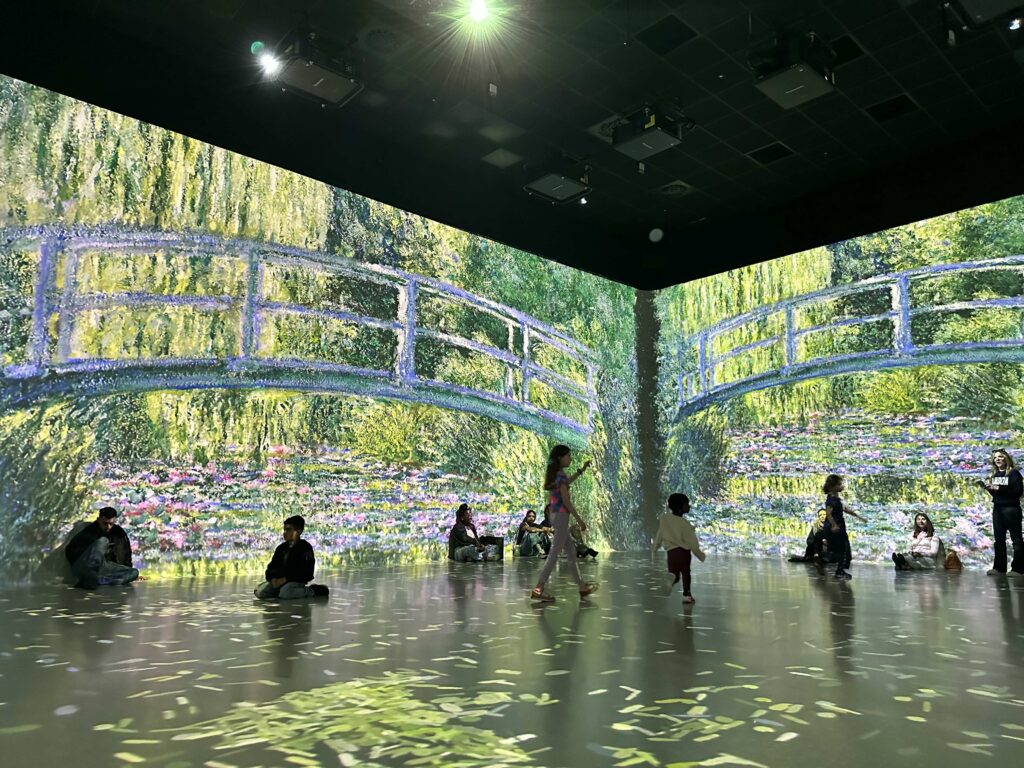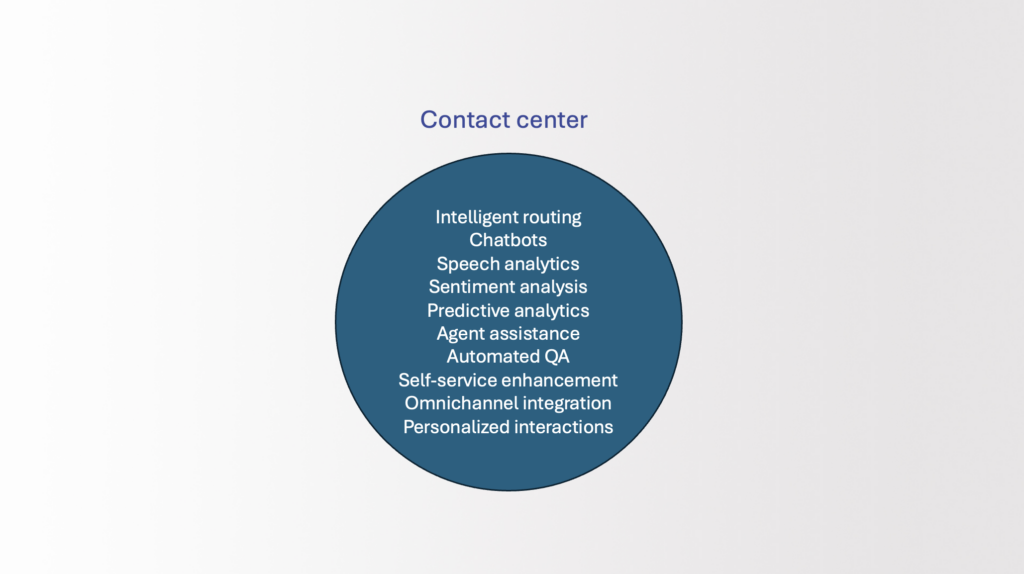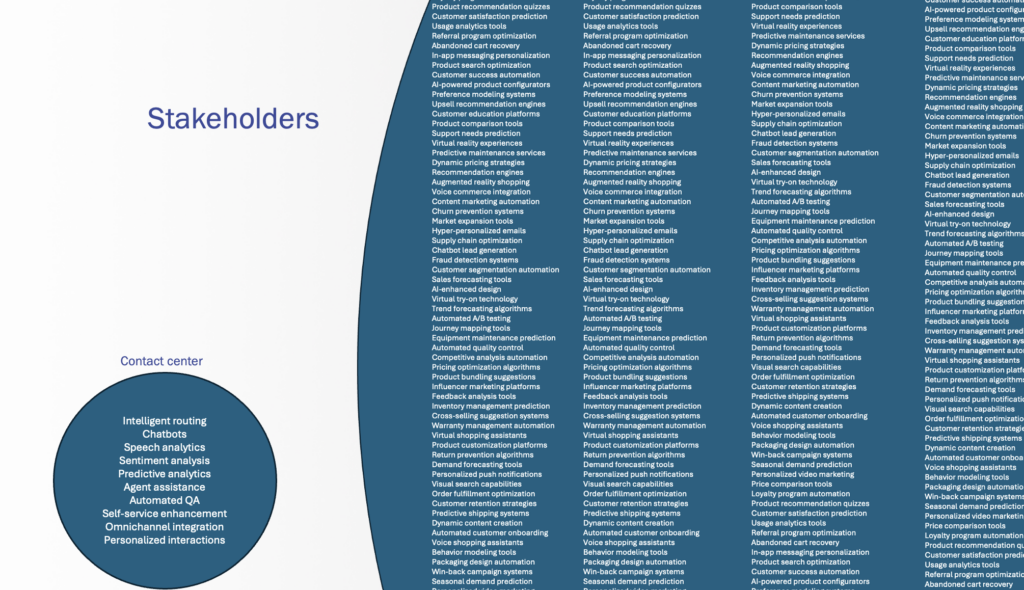Epiphanies can come from the most unexpected sources.
My wife Kirsten and I recently spent some time in the London area. It was to be a quick business trip, but seeing that it fell on my birthday, we decided we’d add some personal days—with the goal of trying a new experience each day.

Our week included:
- A Premier League football (soccer) game at Selhurst Park, where Crystal Palace played Manchester United to a 0 to 0 draw in front of a raucous full house. (Selhurst Park, built in the 1920s, is where the Ted Lasso series was filmed.)
- ABBA Voyage, an ABBA concert that features a live band alongside the four “stars” of the show—avatars (“ABBAtars”) that play the part of the band members as they were in the 1970s. Kinda blew us away how realistic they are.
- Frameless, a museum that brings iconic paintings to life. Walking into one of the museum’s large rooms is like walking into a living work of art—e.g., you can kick the (digital) leaves in Claude Monet’s garden in Giverny.

- Flying in a Spitfire, a single-engine fighter that was part of the British Royal Airforce and saw action in 1943. (I wrote about the Spitfire’s lessons on innovation in the last Edge of Service newsletter.)
As I reflected on these seemingly unrelated experiences, I realized they all had something very much in common—they were enhanced or made possible by AI. That’s obvious with the museum and concert. But the game? The plane? Yep. Many fans at the game were both watching the action while engaging in AI-enabled stats, conversation, and replays on their devices. And the plane—I had to book months in advance given the interest from younger generations who are flying AI-fueled flight simulators and watching TV series such as Masters of the Air, made possible by the (very realistic) AI-enabled action scenes.
Much of the conversation on AI has been around the work it can do and jobs it might displace. And yet, these were all examples of AI creating new services and new customer demands around events that took place dozens and even hundreds of years ago.
When browsers fueled the rapid adoption of the Internet in the 1990s, many pundits predicted a decline in contact center work. Ditto the predictions around smart phones ten years later. What they didn’t and couldn’t predict were the new types of work, new customer demands, and entire new industries that these disruptions would enable. Today, there are more contact centers handling more work than at any time in history.

AI is bringing enormous benefits to contact centers—personalization, automated routing, task automation, language tools—the lot. These tools are SO powerful when harnessed appropriately. And of course, they can offload some or much of today’s work.

But remember, AI is impacting every colleague, every department, every customer, every industry, and every stakeholder. It is creating new work and new demands. Once again, the contact center will be asked to step in and provide the customer service and support needed for a new generation of products and services.

Here are some examples—and they are the tip of the iceberg:
- Retail: Contact center agents guide customers through augmented reality (AR) product try-ons and provide advice on virtual outfit combinations.
- Financial: Agents discuss AI-generated insights on financial risks and opportunities with customers and offer tailored advice on investment strategies.
- Utilities: Agents are helping customers understand AI-optimized smart home energy systems, usage patterns, and conservation alternatives.
- Government: Contact center agents help citizens navigate increasingly complex services and handle queries that require human intervention.
- Insurance: Contact centers explain coverage options based on these virtual disaster simulations and assist customers in customizing policies.
These are just a few of the many ways contact centers are beginning to feel the impact of AI-driven innovations and services. Word to the wise: Don’t fall into the trap of forecasting workloads based solely on AI’s impact on today’s work.

What can a soccer game, an ABBA concert, and Monet’s paintings tell us about the future of contact center work? Maybe—a lot.



Brad: Your point is well taken. Another overlapping additional set of workload will be from onboarding of customers to more complex products and services – the majority of companies still do not have a formal onboarding function. Customer is sold and service gets to clean up any messes or incorrectly set expectations. Further, companies are starting to see AI as an effective onboarding tool but there will be a need to handle escalations from that activity where the CSR will have to know in detail what has already transpired. The onboarding tools will have to accommodate a range of customer segments, each of which will have their unique escalations.